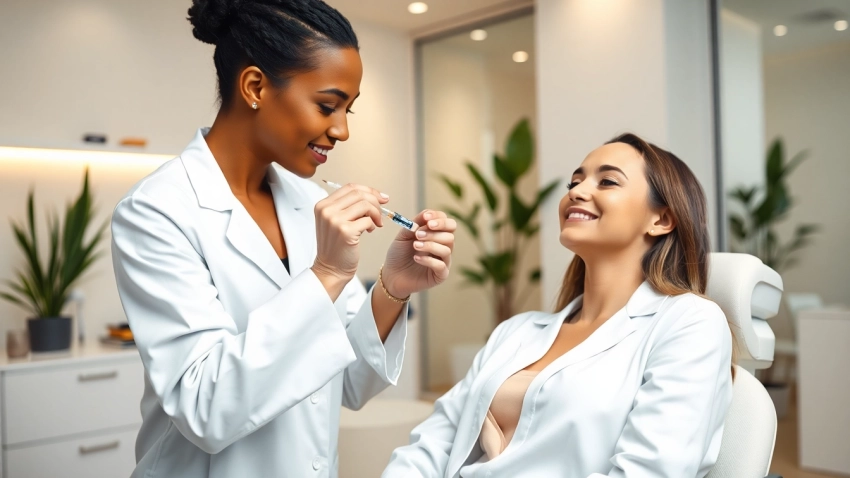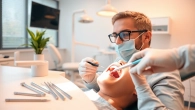
Essential Insights on Botox Injections: Benefits, Safety, and Expectations
Understanding Botox Injections
What Are Botox Injections?
Botox injections are a popular cosmetic treatment used to reduce the appearance of wrinkles and fine lines on the face. The active ingredient in Botox is botulinum toxin, a neurotoxic protein produced by the bacterium Clostridium botulinum. When injected into specific muscles, Botox works by blocking the transmission of nerve impulses, effectively relaxing the targeted muscles. This process helps smooth out dynamic wrinkles, which are caused by repetitive facial movements like smiling and frowning.
How Botox Works in Cosmetic Treatments
The mechanics of Botox involve a well-documented scientific process. When injected, it prevents the release of a neurotransmitter known as acetylcholine. Acetylcholine is responsible for sending messages from the nerves to the muscles, prompting them to contract. By inhibiting this signal, Botox temporarily paralyzes the muscles in the injected area, leading to a reduction in muscle contraction. The result is a softer, smoother appearance, often leading to more youthful aesthetics.
The effects of Botox typically last between three to six months, at which point the body gradually regenerates the nerve connections. Patients often return for follow-up treatments to maintain their desired results.
Common Uses Beyond Aesthetics
While Botox is predominantly known for its cosmetic applications, its uses extend far beyond aesthetic treatments. Medical professionals utilize Botox to address a variety of health conditions, including:
- Migraines: Chronic migraine sufferers may benefit from Botox, as research has indicated its efficacy in reducing the frequency and severity of headaches.
- Hyperhidrosis: For individuals who experience excessive sweating, Botox can be administered to minimize sweat production in areas such as the armpits, palms, and feet.
- Cervical Dystonia: Botox is often used to treat this painful condition characterized by involuntary neck muscle contractions, providing significant relief for patients.
- Overactive Bladder: Injections can help relax the bladder muscles, reducing the urgency and frequency of urination.
Benefits of Botox Injections
Immediate and Long-term Effects
The benefits of Botox injections are twofold: immediate cosmetic results coupled with long-term therapeutic effects. Patients often notice a marked improvement in their skin texture and appearance within a few days following the injection. Wrinkles that once seemed prominent may become considerably less visible or even disappear altogether.
In the longer term, regular Botox treatments may contribute to a process known as “muscle conditioning.” Over time, patients might see not only improved aesthetics but also a reduction in the depth of their wrinkles, even when they are not undergoing treatment. This is potentially due to the decreased use of targeted muscles, thus preventing further crease formation.
Emotional Wellbeing and Self-confidence
Another significant advantage of Botox, particularly in cosmetic applications, is its positive impact on emotional wellbeing. Many patients report feeling more self-confident and empowered after receiving Botox treatments. When individuals feel better about their appearance, it can enhance their social interactions and overall quality of life. A high-profile study has suggested that individuals who actively participate in aesthetic treatments often report increased self-esteem and quality of life improvements.
This psychological benefit should not be underestimated; addressing one’s appearance can contribute to a more positive self-image and can be particularly valuable for those in social or professional settings where first impressions are crucial.
Availability of Customized Treatments
Today’s cosmetic landscape allows for extensive customization when it comes to Botox treatments. Patients are not merely receiving a one-size-fits-all procedure. Instead, qualified practitioners assess each individual’s unique facial structure and aesthetic goals. This personalization ensures that treatments are tailored to meet the specific needs and desires of patients.
Practitioners can also combine Botox with other treatments such as dermal fillers or laser therapies, creating a comprehensive approach to facial rejuvenation. Customized treatment plans account for factors such as age, skin type, and desired outcomes, ultimately leading to results that are not only effective but also harmonious with the patient’s features.
Safety and Side Effects of Botox Injections
General Safety Guidelines
Botox is generally considered safe when administered by a qualified and experienced healthcare provider. It is imperative to ensure that your practitioner is certified and has undergone appropriate training in the usage of Botox. Safety guidelines recommend conducting a thorough consultation where the provider assesses patient’s medical history and discusses any potential risks involved with the treatment.
Patients with certain conditions, such as neuromuscular disorders or allergies to the components of Botox, should disclose this information during initial consultations, as it may affect their eligibility for treatment.
Possible Side Effects and Risks
While Botox is largely safe, it is essential for patients to be informed of potential side effects. Common side effects may include:
- Localized pain, swelling, or bruising at the injection site.
- Headaches that can occur shortly after treatment.
- Nausea or flu-like symptoms.
- Temporary eyelid droop or asymmetry, which generally resolves within a few days.
Serious side effects are rare but may occur, operating under the purview of unqualified administration or in patients with contraindications. Symptoms may include difficulty swallowing, respiratory problems, or muscle weakness. In such cases, immediate medical attention is advised.
Who Should Avoid Botox?
Botox is not suitable for everyone. Individuals who are pregnant, breastfeeding, or have a known allergy to botulinum toxin or any of its ingredients should refrain from opting for treatment. Furthermore, people with certain medical conditions such as myasthenia gravis or lambert-eaton syndrome should consult their healthcare provider before considering Botox injections.
Understanding the risks and implementing thorough consultations can significantly enhance the safety of Botox treatments, ensuring they are an appropriate option for candidates seeking aesthetic or medical relief.
Choosing the Right Provider for Botox Injections
Qualifications and Experience of Practitioners
Choosing the right provider for Botox injections is one of the most critical decisions a patient will face. Prospective patients should seek practitioners with relevant qualifications, including board certification in dermatology or plastic surgery. Additionally, practical experience and thorough understanding of facial anatomy are essential considerations.
Reading patient reviews, requesting before-and-after photos of previous treatments, and confirming that the facility follows health regulations can further aid in ensuring a safe and effective treatment experience.
Questions to Ask During Consultations
Before committing to a procedure, patients should not hesitate to ask their practitioners critical questions, such as:
- How long have you been administering Botox injections?
- Can you show me before-and-after pictures of previous patients?
- What are the potential side effects I should be aware of?
- How do you determine the correct dosage for your patients?
- What are the contingency plans if complications arise?
Gaining detailed responses to these questions can provide comfort and assurance, leading to an informed decision regarding both practitioner choice and treatment pathway.
Understanding Treatment Costs
The cost of Botox treatment can vary widely, influenced by factors such as geographic location, practitioner expertise, and the specific areas being treated. Generally, Botox injections are priced per unit, with the total cost dependent upon the number of units utilized during the procedure.
While cost is an important consideration, it is advisable not to prioritize savings at the expense of quality or safety. Investing in a highly qualified provider may result in superior outcomes and reduced chances of complications or the need for corrective treatments in the future.
Aftercare and Maintenance for Botox Injections
Post-Treatment Care Instructions
Post-treatment care is critical for ensuring the best results from Botox injections. After the procedure, patients are typically advised to avoid touching or massaging the treated areas for at least 24 hours to prevent the toxin from spreading to unintended muscles. Additionally, it’s recommended to refrain from vigorous exercise, excessive sun exposure, and the consumption of alcohol for the first 24 hours post-treatment.
Following these instructions can help maximize the efficacy of Botox and minimize potential side effects.
Understanding Treatment Longevity
The longevity of Botox results can vary by individual, with effects typically lasting between three to six months. Factors influencing duration include the individual’s metabolism, the area treated, and the dosage used. Regular maintenance treatments are encouraged to sustain the desired effects and continue enjoying the aesthetic benefits of Botox.
Patients might observe that with consistent treatments, the intervals between appointments sometimes extend as the muscles become conditioned to the treatment.
Signs You’re Due for a Follow-up
As the effects of Botox begin to fade, individuals may notice the reappearance of fine lines and wrinkles. When patients begin to see the return of these signs, it is usually an indicator that it is time for a follow-up treatment. Other indications may include feeling increased muscle tension or heaviness in the treated areas.
Scheduling follow-up appointments with a trusted practitioner ensures that aesthetic goals are consistently met while upholding the positive psychological impact related to treatment.












Leave a Reply